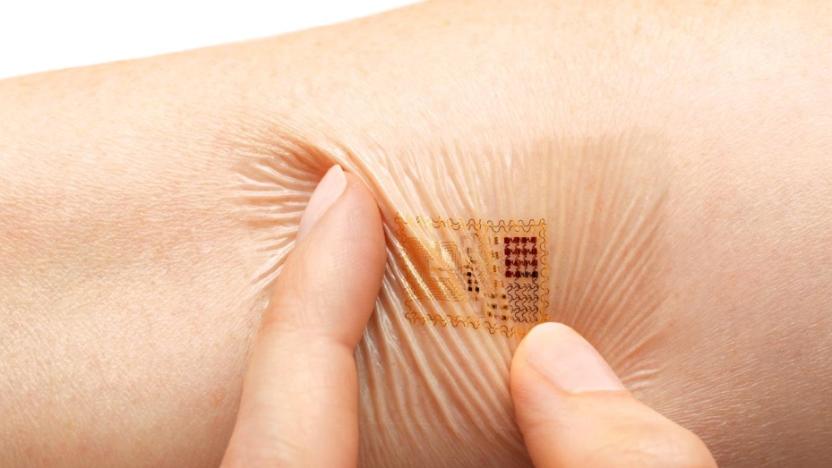biostamp
Latest

Five questions for the athletes making wearables you won't take off
MC10's most notable projects -- the Checklight head-impact tracker that protects athletes from the effects of dangerous collisions and a Biostamp "seamless sensing sticker" -- are already at the forefront of sports and medicine technology. Isaiah Kacyvenski and Angela Ruggiero are experienced athletes on the company's sports advisory board, tasked with figuring out ways to use technology to optimize athletic performance. That's certainly great news if you're an athlete in an impact sport trying to avoid the after effects of concussions, or a blogger getting punched in the face by your coworkers. But what about everyone else? Kacyvenski and Ruggiero will join me at Engadget Expand on November 8th for a discussion on how the new technology can help us stay healthy, and ensure that our workouts are refined to get the most impact. You can tune in or attend the event for free, but check after the break for a quick preview, and let us know if you have any questions that need answering.

Researchers print biometric sensors directly on skin, make wearable health monitors more durable
MC10 might be best known for its wearable electronics aimed at athletes, but the company also makes a medical diagnostic sticker called a biostamp. Its creator (and MC10 co-founder), John Rogers has refined that design so that it's no longer an elastomer sticker -- now he can apply the biostamp's thin, stretchy electronics directly on human skin, and bond it with commercially available spray-on bandage material. By losing the elastomer backing of the original biostamp and applying the circuits directly to the skin, Rogers and his team at the University of Illinois were able to shave the device's thickness to 1/30th of the (already quite thin) biostamp. That super thin profile means it conforms even better to the contours of human hide and makes it shower- and swim-proof during the two weeks it lasts before being naturally exfoliated with your skin. For those unfamiliar with what the biostamp does, it's a mesh of circuits and sensors that can record electrophysiological data like skin temperature and hydration state of the wearer. The new biostamp won't be in your doctor's tool box any time soon, however, as Rogers and his team are still refining the wireless power and communication technologies it leverages. Of course, once those problems are solved, there's a good chance we'll see MC10 turning it into a commercial product.

EES packs circuits into temporary tattoos, makes medical diagnostics fashionable
Flexible circuit pioneer John Rogers and his team are at it again. This time he's developing a wearable, ultra-thin circuit that attaches to your skin just like a temporary tattoo. The Epidermal Electronic System (EES) consists of circuits which could contain electrodes capable of measuring brain, heart and muscle activity in the same way an EEG does now, transmitting this data wirelessly to your doctor. Because it's flexible and bonds to the skin, it can be worn for extended periods, unlike traditional diagnostic pads used in hospitals today. In the lab, the devices were solar-powered with embedded photovoltaic cells -- heavier duty circuits would require inductive charging to be practical. Rogers' team also looked into the tech acting as a game controller (they wired it up to someone's throat and played Sokoban with voice commands, still managing to yield a 90 percent accuracy rate), but it's some way off from replacing your SIXAXIS. One of the problems encountered concerned RF communication -- perhaps they should get on the horn to their friends in Oregon and build those fashionable diagnostic pants we're eagerly waiting for.


